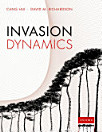Invading Ecological Networks
ene 2022 · Cambridge University Press
eBook
456
Páginas
reportLas valoraciones y las reseñas no se verifican. Más información
Información sobre este eBook
Until now, biological invasions have been conceptualised and studied mainly as a linear process: from introduction to establishment to spread. This volume charts a new course for the field, drawing on key developments in network ecology and complexity science. It defines an agenda for Invasion Science 2.0 by providing new framings and classification of research topics and by offering tentative solutions to vexing problems. In particular, it conceptualises a transformative ecosystem as an open adaptive network with critical transitions and turnover, with resident species heuristically learning and fine-tuning their niches and roles in a multiplayer eco-evolutionary game. It erects signposts pertaining to network interactions, structures, stability, dynamics, scaling, and invasibility. It is not a recipe book or a road map, but an atlas of possibilities: a 'hitchhiker's guide'.
Acerca del autor
Cang Hui is a Professor of Mathematical Biology and holds the South African Research Chair in Mathematical and Theoretical Physical Biosciences at Stellenbosch University. He is a trustee of the International Initiative for Theoretical Ecology. He has published widely on biological invasions and ecological networks.
David M. Richardson is Director of the Centre for Invasion Biology at Stellenbosch University. He is a member of the Species Survival Specialist Group on Invasive Organisms for the International Union for Conservation of Nature. His main expertise is in invasion ecology, and particularly alien tree invasions. He has published extensively on invasive species and restoration ecology.
Valorar este eBook
Danos tu opinión.
Información sobre cómo leer
Smartphones y tablets
Instala la aplicación Google Play Libros para Android y iPad/iPhone. Se sincroniza automáticamente con tu cuenta y te permite leer contenido online o sin conexión estés donde estés.
Ordenadores portátiles y de escritorio
Puedes usar el navegador web del ordenador para escuchar audiolibros que hayas comprado en Google Play.
eReaders y otros dispositivos
Para leer en dispositivos de tinta electrónica, como los lectores de libros electrónicos de Kobo, es necesario descargar un archivo y transferirlo al dispositivo. Sigue las instrucciones detalladas del Centro de Ayuda para transferir archivos a lectores de libros electrónicos compatibles.





